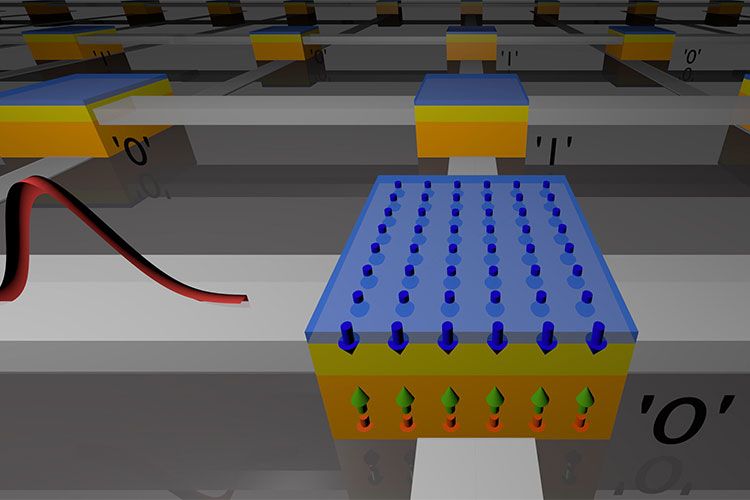By Gary Elinoff, contributing writer
Most present-day forms of fast, random access computer memory (RAM) are based on the presence or absence of an electrical charge to indicate a “1” or a “0.” This memory is truly fast, with readily achievable switching times of under a picosecond, or one-billionth of a second. And they need to be this fast to keep up with the capabilities of modern CPUs.
The problem is that this sort of really fast memory needs constant infusions of power to retain that “1” or that “0.” The power per bit is, of course, tiny, but considering that today’s electronic devices employ gigabytes of memory, that power requirement adds up fast, and that expenditure of power also generates heat. Supplying power and dissipating heat are always issues in computer design, and for mobile devices, wearables, and remote IoT devices, they can be the most critical factors for design success or failure.
Magnetic memory
The advantage of magnetic random access memory (MRAM) is that it is nonvolatile — once the memory is set, it needs no sustaining power to keep it set. But the disadvantage is lack of speed. Professor Jeffrey Boker and his group at the University of California (UC) set out to break that speed barrier. They found that magnetic alloys of gadolinium and iron, when pulsed by laser bursts as short as a few picoseconds (trillionths of a second), could change the direction of the magnetism in 10 picoseconds. While not as fast as charge-based semiconductor RAM, it represents a vast improvement of any extant MRAM technology.

Magnetic memory bit switched by an ultrafast laser burst. Image source: UC Berkeley.
“The electrical pulse temporarily increases the energy of the iron atom’s electrons,” said project member Richard Wilson of UC. “This increase in energy causes the magnetism in the iron and gadolinium atoms to exert torque on one another and eventually leads to a reorientation of the metal’s magnetic poles. It’s a completely new way of using electrical currents to control magnets.”
But the gadolinium-iron alloy was only the first step. As noted by Charles-Henri Lambert , also of Berkeley, “finding a way to expand our approach for fast electrical writing to a broader class of magnetic materials was an exciting challenge.” The next step was stacking a layer of cobalt on top of the gadolinium-iron. A second study was undertaken, the results of which were published in the journal Applied Physics Letters . Here, employing GdFeCo (gadolinium, ferrous, cobalt) films, switching was demonstrated to be causable by laser pulses of far shorter duration, which argues for even more energy efficiency and still less generation of troublesome heat.
Magnetic memory is not the only possibility in the search for faster, more efficient memory. Hewlett Packard Corporation and others have invested much time and effort into the development of memristors , devices that employ changes in resistance as indications of memory states of “1” or “0”. The need for more energy-efficient memory is apparent, and the search will continue.
Advertisement
Learn more about Electronic Products Magazine





